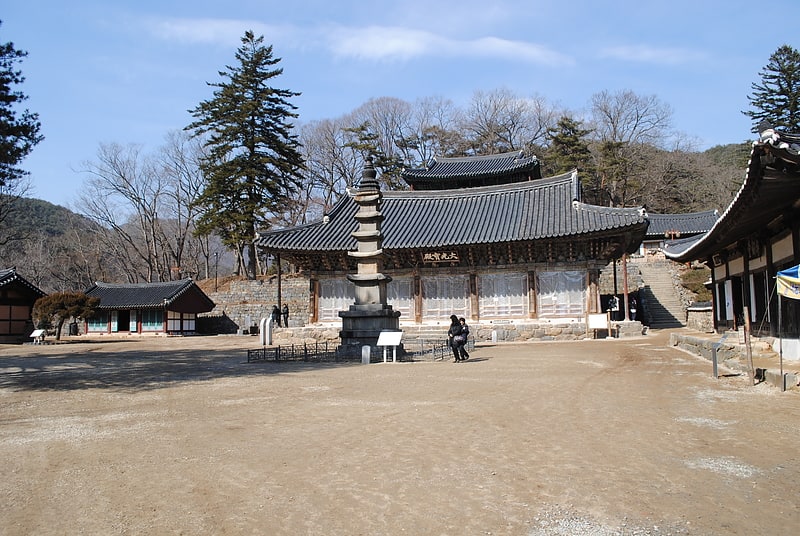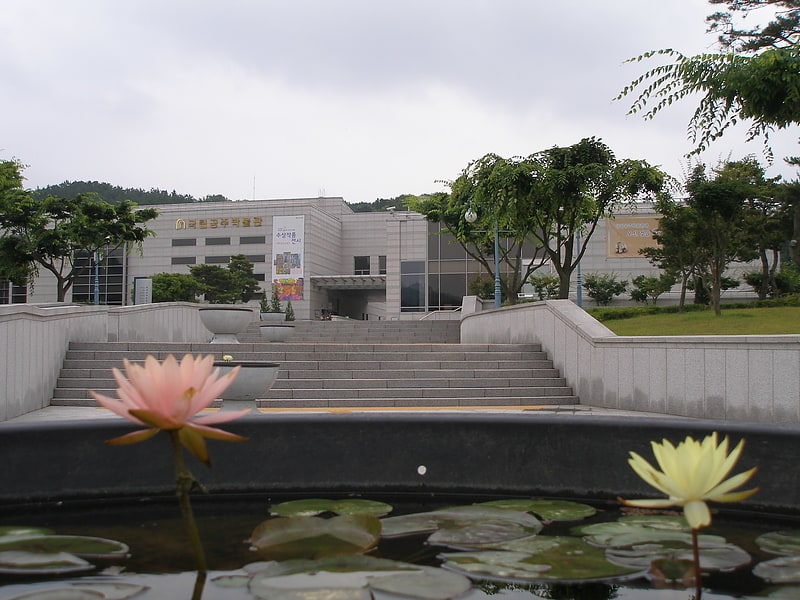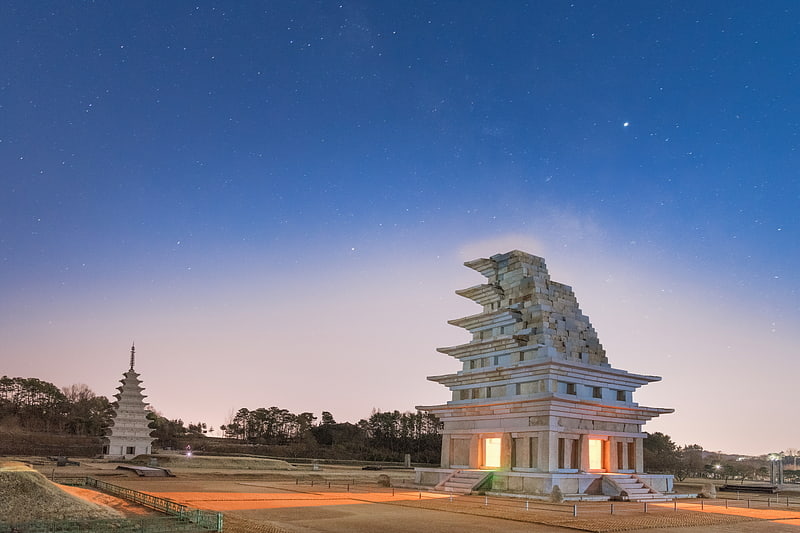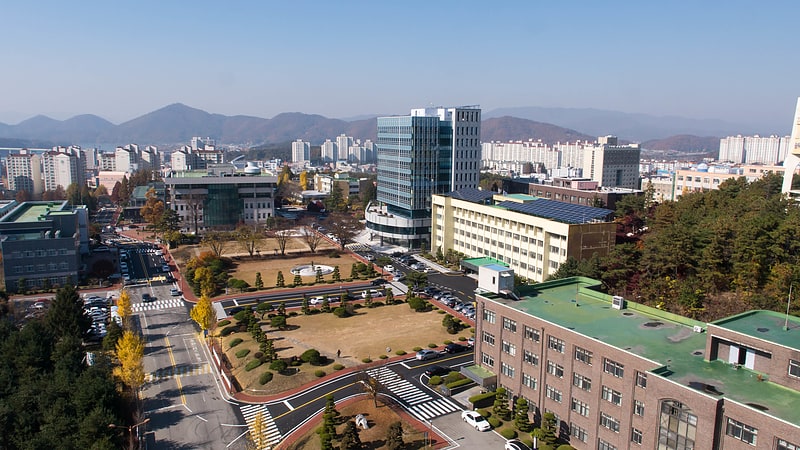Discover 5 hidden attractions, cool sights, and unusual things to do in Gongju (South Korea). Don't miss out on these must-see attractions: Magoksa, Tomb of King Muryeong, and Gongju National Museum. Also, be sure to include Baekje Historic Areas in your itinerary.
Below, you can find the list of the most amazing places you should visit in Gongju (Chungcheongnam-do).
Table of Contents
Magoksa

Also known as: 마곡사
Temple in Gongju, South Korea. Magoksa is a head temple of the Jogye Order of Korean Buddhism in Gongju, South Korea. It is located on the eastern slope of Taehwasan, on taegeuk-shaped bend in the Taegeukcheon Stream.[1]
Address: 567, Unam-ri, Sagok-myeon, 314-872 Gongju
Tomb of King Muryeong

Also known as: 무령왕릉
Tomb in Gongju, South Korea. The Tomb of King Muryeong, also known as Songsan-ri Tomb No. 7, is the ancient tumulus of King Muryeong, who ruled the Baekje from 501 to 523, and his queen. The rarity of intact Baekje tombs makes this one of the major archaeological discoveries in Korea and a crucial source for the understanding of Baekje, one of the Three Kingdoms of Korea.
The tomb is located in what is now Gongju, South Chungcheong Province, South Korea. It is Korean Historic Site No. 13. King Muryeong's Tomb is also registered on the South Korean government's tentative list of World Heritage Sites.[2]
Address: 37, Wangneung-ro, 32535 Gongju
Gongju National Museum

Also known as: 국립공주박물관
Museum in Gongju, South Korea. Gongju National Museum is a national museum in Gongju, South Korea. The Gongju National Museum holds 10,000 artifacts including 19 national treasures and 3 treasures excavated in Daejeon and Chungcheongnam-do areas, especially artifacts from Tomb of King Muryeong.[3]
Address: 360 Ungjin-dong, 314-020 Gongju
Baekje Historic Areas

The Baekje Historic Areas are a group of monuments located in three South Korean cities: Gongju, Buyeo, and Iksan. They relate to the last period of the Baekje Kingdom, representing the period from 475 to 660 CE, which was one of the three kingdoms that flourished from 18 BC to 660 AD. The property designated as a UNESCO World Heritage Site has eight archaeological sites. These are: The Gongsanseong fortress and the royal tombs at Songsan-ri, related to the capital city of Ungjin, now Gongju; the Busosanseong Fortress and Gwanbuk-ri administrative buildings, the Jeongnimsa Temple, the Neungsan-ri royal tombs, and the Naseong city wall in Sabi, now Buyeo; and the Wanggung-ri Palace and the Mireuksa Temple in Iksan, a subsidiary capital region of Sabi.
The Baekje Historic Areas were inscribed as a UNESCO World Heritage Site on 8 July 2015 at the 39th session of the Committee. They were inscribed both as a cultural heritage under Criteria II, for the cultural and architectural features which the ancient East Asian kingdoms of Korea evolved in respect of construction methods and Buddhism and exchanged with China and Japan, and under Criteria III, for the extraordinary architecture, culture, religion, and artistry of the Baekje Kingdom in its capital cities, Buddhist shrines and funerary structures, and stone pagodas.[4]
Kongju National University

Also known as: 공주대학교
University in Gongju, South Korea. Kongju National University is a university located in Chungcheongnam-do, South Korea with three campuses in Gongju, Cheonan and Yesan. Kongju National University is one of the leading national research universities of South Korea, especially in the field of education. Kongju National University is 2014 International Education Quality Assurance System certified university.[5]